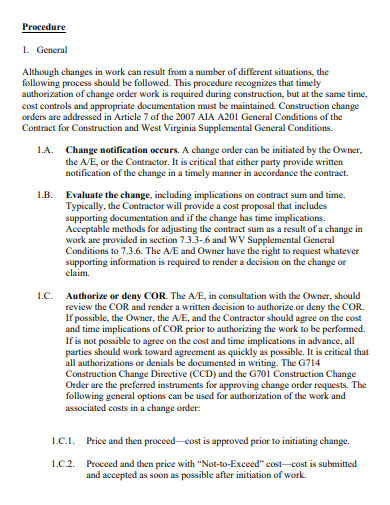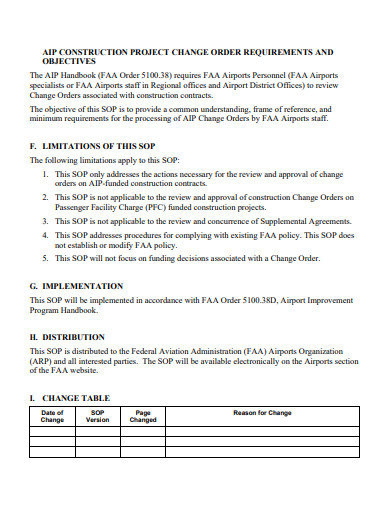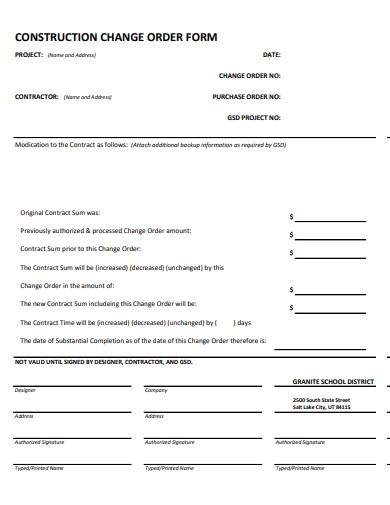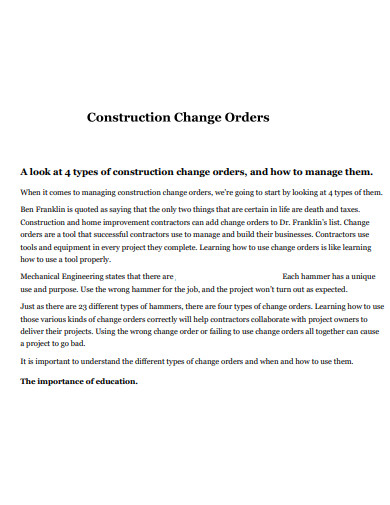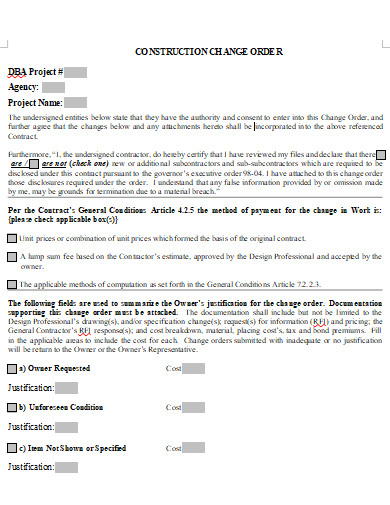Although the word “change order” is common in the construction sector, you’re rarely to have heard it elsewhere. It’s crucial for a new practitioner to understand change orders; it’s a rare scenario where the parties don’t have at least one opposed change order. The phrase “change order” refers to an addendum to a construction contract that alters the scope of work performed by the contractor. Most change orders alter the period of time the contractor has to finish the task or revise the work needed by contract terms (which, in turn, usually increases the contract price). The project owner must both concur on all parameters for a change order to be enforceable.
10+ Construction Change Order Samples
A change order is the record of a contract to add or remove work, change the design, update the timetable, modify the pricing, or diverge from the initial concept in some other way in the construction sector. An owner and a general contractor (or a general contractor and a subcontractor) concur on a specific scope change in the framework of this change order, and the details are recorded in the change order document. The construction change order is an addition to the original agreement that outlines the project scope for the project and references plans, drawings, and parameters. Change orders are prevalent in construction, and they appear in practically every corporate and government project.
1. Construction Budget Change Order
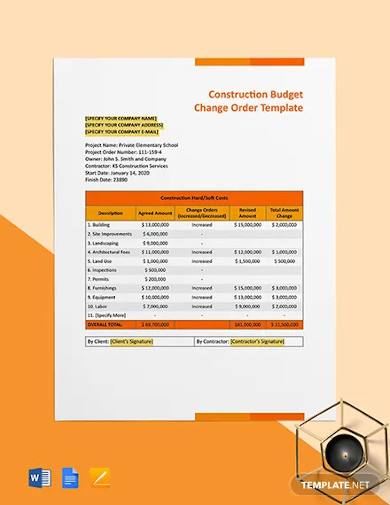
2. Commercial Construction Change Order
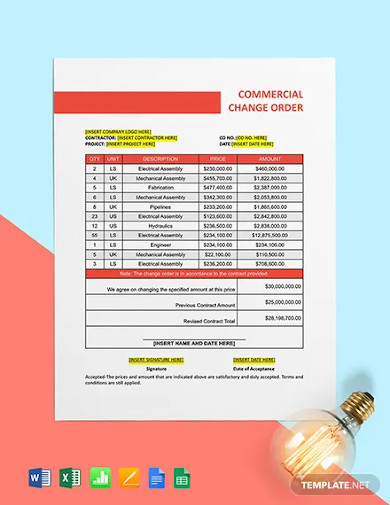
3. Construction Scope of Work Change Order

4. Construction Contract Change Order
5. Sample Construction Change Order
6. Construction Project Change Order
7. Sample Construction Project Change Order
8. Construction Change Order Form
9. Construction Change Order Management
10. Construction Change Order Example
11. Printable Construction Change Order
Changes in construction plans usually have only one negative effect. For example, an owner may miss a deadline for the opening of a new structure, or a contractor may be forced to utilize a more expensive material without obtaining additional remuneration.
Change orders may be required for a variety of reasons. For instance, a contractor may determine that ground soil conditions are less stable than the designers anticipated. Such a disparity will force you to rethink your technique and will almost certainly necessitate extra work, time, and supplies.
Another case in point: After a contractor has placed lighting fixtures, the owner may elect to improve the lighting. The contractor would issue a change order to address the dismantling of the original fixtures as well as the procurement and establishment of a new fittings to formalize this modification. The long-term nature of the corporate building process necessitates the use of a change order: considerable differences between the proposed ideas, designs, budgets, and other factors (once work starts) are unavoidable. More actors, such as architects, engineers, and other design specialists, become involved in the interim (between the submission of the initial blueprints and the start of construction). They work on various elements of the project while attempting to coordinate their efforts.
FAQs
What are some of the tips for change order disputes?
A change in one contract does not imply a change in another. There may be a gap in the scope of work if the owner and contractor execute a change order, but the contractor fails to get a change order from its subcontractor. Ascertain that subcontractor clients receive the modification orders they are entitled to.
Why do you have to meet other stakeholders?
Before you document the change on your form, meet with the owner, contractor, and subcontractor to discuss it. Try to get to an understanding about how the change would effect the cost and schedule. (Keep in mind that oral agreements aren’t legally enforceable, so don’t rely on a talk with the foreman.)
Bring all stakeholders in the picture from pre-construction through project closeout with authentic engagement and automated notifications so you can make smarter, more educated choices while completing projects on schedule and within budget.
Related Posts
Written Warning
Event Program
OMR Sheet
Building Inspection Report
Employment Certificate
Teacher Lesson Plan
Deed of Assignment
Contract Termination Letter
Student Research Proposal
Diet Plan
Housekeeping Resume
Marriage Proposal Letter
Nursing Resume
Fund Transfer Letter
Purchase Order Cancellation Letter


